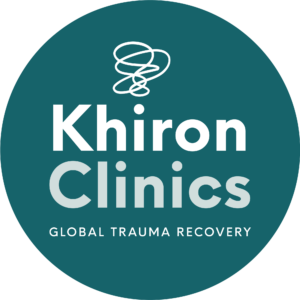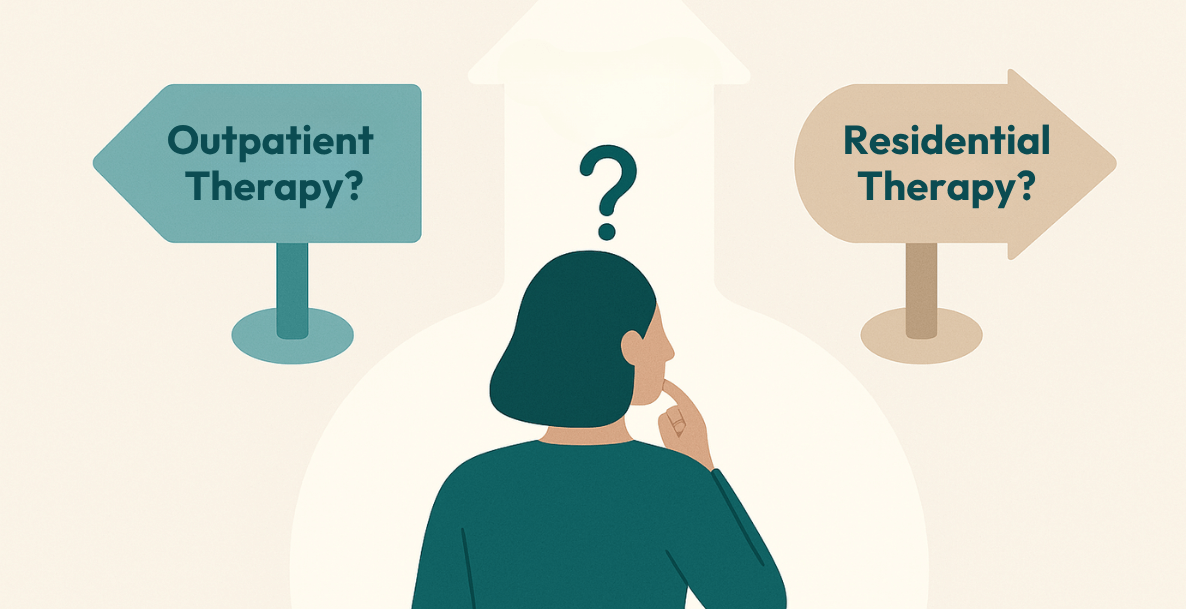Traumatic events are overwhelming, often shifting the entire worldview of survivors. After a traumatic incident, survivors can find themselves deeply affected by sounds, smells, places and even certain people that are connected to the event.
These are known as triggers, the nervous system’s reaction to sensory information related to traumatic memories. Triggers can arise internally or externally, ranging from common stressors like loud noises to highly individualised stimuli such as a sense of loss of control. Some people consciously avoid known triggers, while others may be unaware of these elements and their associated responses.
Identifying and managing triggers can be challenging, often requiring time and diverse resources to develop effective coping strategies. With a deeper understanding, there are several strategies people can take to overcome and address their triggers.
Triggers: The Role of the Brain
Triggers spark a reaction in the body when the amygdala detects sensory information – such as a sound or feeling – that is connected to the memory of a traumatic incident. The amygdala categorises the situation as threatening, creating a cascade of bodily processes, such as the release of stress hormones, that mirror the response to threat during the original traumatic event. Put very simply, triggers are the result of an unfinished response to threat as part of our bodies’ natural, automatic stress response.[1]
Traumatic memories disrupt the normal processing in the brain, as they are not stored and processed in the same way as non-traumatic memories. The heightened arousal and stress during trauma impact the hippocampus, hindering the precise storage and recall of details. Some people have no memory of traumatic events, and others struggle to remember specifics, but in all cases of trauma, the memory is stored without the associations and context that it should be. This part of what causes triggers to have such a deeply distressing effect on survivors.
How and Why Does This Happen?
During trauma, the stress response activates the amygdala and inhibits the thinking brain, allowing the brainstem to take control. This is beneficial for survival, ensuring quick reactions and increased oxygen to other areas of the body such as muscles. However, the thinking brain is where memories are supposed to be stored, so trauma memories are processed incompletely. In some cases, the emotional brain retains isolated sensory fragments, such as images and sounds, leading to vivid recollections, nightmares, and flashbacks long after the trauma concludes. [2]
Trauma memories are often described as lacking timestamps, because the information processing system, responsible for linking memories with other information, is compromised. Both large-T traumas, like assaults, and small-t traumas, like childhood teasing, can lead to dysfunctional memory storage.[3] This hinders the formation of adaptive connections and the ability to differentiate between the perceived threat during the traumatic event, and a smell or tone of voice that causes the same reaction years later.[4]
There are a multitude of different ways people can react to triggers, such as feeling anxious, overwhelmed, and panicked, to feeling numb and dissociated. As triggers can make the traumatic event feel like it is occurring once again, the brain reacts as if threatened and shifts the body into a state of fight or flight, flooding the body with stress hormones that prepare people to fight off or flee the perceived threat.
Alternatively, individuals may freeze, which contributes to feelings of dissociation and paralysis. This feeling of overwhelm can lead to a sense of powerlessness, and people may find it difficult to interact with others or explain their feelings.
Triggers are most commonly associated with PTSD. They can also occur in the context of other mental health conditions, such as eating disorders or substance use disorders, and can be similar to triggers for trauma survivors.
Examples of Triggers
There are a wide range of triggers that people can experience after a traumatic event:
- Smells – Scents such as a specific perfume or laundry powder can be triggering for people, and there is evidence to suggest that the sense of smell may be more closely connected to traumatic reminders.[5]
- Sounds – Arguments, loud noises, and many other sounds can all be triggers.
- Dates – For example, if a distressing event occurred at a specific time of year or on a holiday such as Christmas.
- Places – Going back to the specific place of a traumatic incident can be distressing, and people may take extensive steps to avoid it.
- Emotions – Triggers are not always external, and emotions such as anxiety, anger, or feelings of loneliness can be triggering.
Flashbacks
Triggering experiences or emotions may also lead to flashbacks, when memories of past traumatic events feel as though they are taking place in the current moment. Flashbacks often centre on the moment the first threat of danger was felt, which is why individuals who have flashbacks may take defensive actions to protect themselves at the moment, such as running away from a situation or becoming aggressive.[6]
Avoidant Coping
As triggers are emotionally distressing and overwhelming, trauma survivors may try to avoid them in their day-to-day lives. This could be detrimental to their overall healing, as many emotions and dates cannot be avoided. Some people may turn to harmful methods of coping, like substance abuse, to numb triggering emotions.
Additionally, avoidance of triggers can create more anxiety around them and exacerbate stress in the long term. However, there are many healthy alternatives to coping with and managing triggers.
Overcoming Triggers
Although they can be challenging to deal with in the moment, there are a variety of ways to overcome and manage triggers:
Identify Specific Triggers
An essential step in overcoming and coping with triggers is to identify them. Although some may be easy to pinpoint, such as witnessing violence, some can be more subtle. Being mindful of specific situations, emotions, and bodily sensations can help people identify and track their triggers and set them on a path to developing strategies to manage them.
Design a Safety Plan
Identifying triggers can be a triggering process in itself. A safety plan helps to create space to cope with being triggered so trauma survivors can take a step back and manage their symptoms. This could involve physically moving away from a triggering place, reaching out to a friend for support, or using relaxation techniques to soothe anxiety. A predetermined plan helps to provide a sense of control during distressing moments.
Focus on Mindfulness
Mindfulness does not only mean meditation. It is the practice of being fully present in a moment without distraction from the thoughts, feelings, and emotions that arise, including those of any potential triggers. Mindfulness can help focus attention on the moment at hand while also helping to reduce the stress and anxiety that can come with being triggered.
Grounding techniques are a form of mindfulness that can keep the mind focused on the present and remind people that they are safe at the moment. Using the senses can help trauma survivors move through overwhelming thoughts and feelings, and can include techniques such as:
- Holding a piece of ice
- Feeling the weight and sensation of clothes
- Placing hands in warm or cold water
- Describing a scene out loud
Set Firm Boundaries
Clear, healthy boundaries around triggering events can help those struggling with trauma manage their emotions in healthy, productive ways. These boundaries could include informing people of specific triggers and topics to avoid, which helps foster greater understanding and empathy of triggers and reinforces a feeling of safety within a social community.
Seek Professional Support
Trauma survivors are not alone in their journey to healing. Professional support and techniques such as somatic experiencing, psychoeducation, and eye movement desensitisation and reprocessing (EMDR) can aid in the reduction of trauma symptoms and treat the root causes of trauma.
Treating the Causes of Triggers at the Root
Triggers are symptomatic of a broader issue in the brain and body, namely, trauma. By understanding the body and brain’s reaction to triggers, survivors are empowered to take the next steps to overcome trauma and effectively manage triggers.
Sources:
[1] Levine, P. A. (1997). Waking the tiger: healing trauma : the innate capacity to transform overwhelming experiences. Berkeley, Calif., North Atlantic Books.
[2] Van der Kolk, B. A. (2015). The body keeps the score: brain, mind, and body in the healing of trauma. New York, New York, Penguin Books.
[3] Schwartz, A. and Maiberger, B. (2018) EMDR therapy and somatic psychology: Interventions to enhance embodiment in trauma treatment. New York: W.W. Norton & Company.
[4] Strange D, Takarangi MK. Memory distortion for traumatic events: the role of mental imagery. Front Psychiatry. 2015;6:27. doi:10.3389/fpsyt.2015.00027
[5] Vermetten, Eric; Bremner, J. Douglas (15 February 2003). “Olfaction as a Traumatic Reminder in Posttraumatic Stress Disorder: Case Reports and Review”. The Journal of Clinical Psychiatry. 64 (2): 202–207. doi:10.4088/jcp.v64n0214. PMID 12633130.
[6] Brewin CR. Re-experiencing traumatic events in PTSD: new avenues in research on intrusive memories and flashbacks. Eur J Psychotraumatol. 2015;6:27180. doi:10.3402/ejpt.v6.27180






